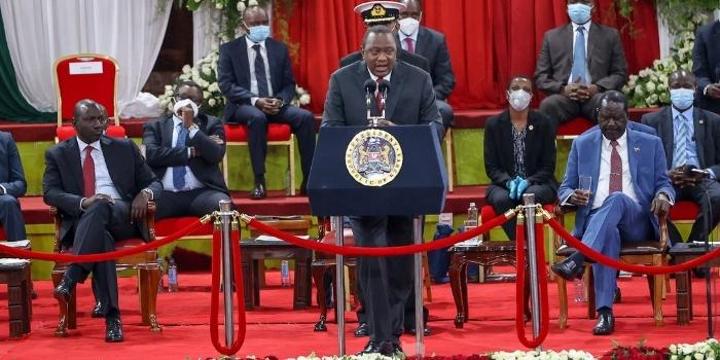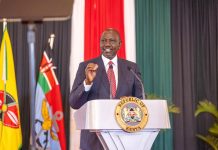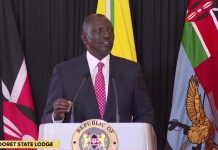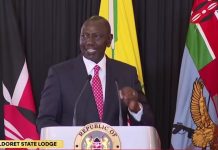Africa-Press – Kenya. In exactly 330 days, Kenyans will go to the ballot to elect President Uhuru Kenyatta’s successor and the fifth Head of State, alongside other leaders.
The August 9, 2022 General Election will be one of the most contested polls in the history of the country, with many politicians already expressing interest in the Presidency.
Among those who are keen to lead the country upon the retirement of President Kenyatta is Raila Odinga of the Orange Democratic Movement (ODM), Stephen Kalonzo Musyoka of Wiper Democratic Movement, Musalia Mudavadi of the Amani National Congress, and the incumbent Speaker of the National Assembly, Justin Bedan Njoka Muturi.
Speaker Muturi is one of the newest entrants into elective politics, and his shot at the presidency is pegged at his ability to mobilise votes from his populous Mt Kenya backyard. Muturi will be joined by businessman Jimmy Wanjigi, who is also in the race to succeed Kenyatta and hopes to secure the ODM nomination.
These aspirants, among others who will be on the presidential ballot, have been keen on securing the Mt Kenya vote. But why is it so important to them?
The Mt Kenya region is composed of ten counties including Kiambu, Murang’a, Nyeri, Kirinyaga, Embu, Tharaka nithi, Meru, Nyandarua, Laikipia and by extension Nakuru.
The Numbers
The ten counties have a combined population of 10,710,491 people as per the 2019 Census Population results. This is close to a quarter of the country’s population.
As per the 2017 data by the Independent Electoral and Boundaries Commission (IEBC), the counties have 64 constituencies in total, with Kiambu registering the highest number with 12. It is followed by Nakuru (11), Meru (9), Murang’a and Nyeri (7 each), Kirinyaga, Embu and Nyandarua (4 each), while Tharaka Nithi and Laikipia have 3 each.
Combined, the counties had a total of 5,331,285 registered voters as per the 2017 IEBC voter register, translating to 27.18 per cent of the total 19,611,423 registered voters countrywide. This is more than a quarter of the total voting population, giving the region a more significant voice.
During the highly contested 2017 elections, President Kenyatta garnered 3,975,757 votes, an equivalent of 74.57 per cent of the total registered voters. However, the voter turnout in the region averaged 76.2 per cent.
The votes garnered by President Kenyatta in the region represented 53.12 per cent of the total 7,483,895 votes he received in the repeat poll to successfully defend his seat.
The number of registered voters in the area is projected to grow by between 6 – 11 per cent between the last election and the August 9, 2022 elections.
With these numbers, it is easy to deduce why leaders seeking the presidency are keen to get the region’s backing.
Raila Odinga, who served as the country’s Prime Minister in the Government of National Unity under the President Mwai Kibaki’s presidency, has increased his tempo in a bid to capture the region’s votes and is viewed as President Kenyatta’s preferred candidate.
Recently, President Kenyatta brought together opposition leaders including Odinga and the One Kenya Alliance (OKA) co-principals led by Mudavadi, Musyoka, Gideon Moi of KANU and Moses Wetangula of Ford Kenya, in what was reported as a move to get them back Odinga in the 2022 State House race.
Should the opposition politicians unite, they will face off with Deputy President William Ruto, who has made it clear that he will be on the ballot on a United Democratic Alliance (UDA) party ticket.
DP Ruto, whose relationship with his boss, President Kenyatta, has been deteriorating since the March 9, 2018 handshake between President Kenyatta and Odinga, has concentrated his efforts on the Mt Kenya region, meeting with leaders from the area as well as holding political campaigns there.
The charm offensive by both Odinga and Ruto has, however, not been received so well by the leaders from the region who have been making demands they say must be met before backing any candidate for the country’s top job.
The question remains: Who will climb the mountain faster than the rest? As things stand now, it is a wait-and-see situation.






